Think More +
Maybe it's time to take a guide I'm currently working on things ... maybe it's not a cohesive framework or comprehensive, but serves to take stock of the situation.
Sunday, March 21, 2010
Waterproof Gloves For Cleaning Pool
Digital Artist!?
Many years ago, when I went again the Academy of Fine Arts in Bologna, ran the year 1986, I had been thinking how it would be the artist of the future. I remember a discussion in the corridors of the Academy with Yuji and I imagine painting with light tools, computers and things like ... certainly the computer and software have made great strides and now you can draw and paint to your computer. Probably the tools and interfaces will improve and get closer to the process of creation. But this process should be as close to the art world, without too much jargon and more practical sense. Today's graphics tablets have become a true display of light where we can draw and paint directly onto the canvas. But unfortunately the software is too complex to master, in my opinion because they use a metaphor of the beginnings of man-machine ... we would see the future.
This image was created with Mypaint a free software program that runs on Linux, MacOS X and Windows. The texture of the paper was created from a sample of watercolor paper Shoeller.
Mypaint and Gimp
are a number of years that this computer work and research on digital painting began in 1990 when I acquired my first computer. I have used many operating systems from DOS, through Windows and Apple environments (MacOS and MacOS X). Since 2003, I mostly use free operating systems, Linux, mainly the distribution called Ubuntu (I find it a very friendly and suitable for my creative work). on Linux (and now also on others such as Windows and MacOS X), there are two applications for scenic painting and 'digital processing, and Mypaint Gimp. Mypaint
is a great application for digital painting, has an essential and innovative methods to create and manage brush.
Gimp is a program created as a package for photo editing but lately is being used by many artists in the digital painting (digital painting). Gimp has a nice form for the creation of brushes and pencils. To do this it has two methods, one based on the physical description of the brush (statically) and placed on another image rasters, called dynamic. In both cases the brushes buy a lot of dynamic effects in the form rendered by the 'brush dynamics' (pressure, velocity and random).
1 - digital brushes (gimp and mypaint)
research based on digital brushes Gimp is started up in 2008 (but with some interruptions and changes of mind). Initially I looked closely at how the dynamic array of brushes in gimp. Brushes can be very complex in terms of construction and, in fact I have created several types, watercolors, acrylics and oil and to some designed to woodcut. Recently I started to remove the meat and to simplify many concepts, trying to figure out how to get the desired effect with minimum effort and maximum economy in the construction of brushes. I produced a series devoted to this exercise with pencils and I managed to get an excellent match with real pencils, high-performance relation to the preparation traits as a draw to your computer. Keep in mind that if the brush is complex, it takes a long processing time to the computer, and this produces a kind of waiting while a draw. With the application Mypaint brushes are all a beautiful and dynamic use of the processing algorithm based on a simple circle, on which we can give reps, speed, randomness, etc.., Added to these basic calculations are a kind of dynamic filters which are static and can be used to create an extensive range of brushes and effects that emulate many painting techniques. Mypaint you can work with virtually infinite on a frame, which is very pleasing to me, useful when being made of quick sketches or ideas while you search for the doodles. lot of work done to your computer with these brushes were commissioned illustrations from magazines or publishers. It is my intention to create a series of works and pictorial compositions, a kind of reinterpretation of the American artist Mark Rothko, using the last set of pencils and crayons to create gimp.

Examples of strokes of the brush dedicated to pencils and crayons


Examples of work done with these digital brushes
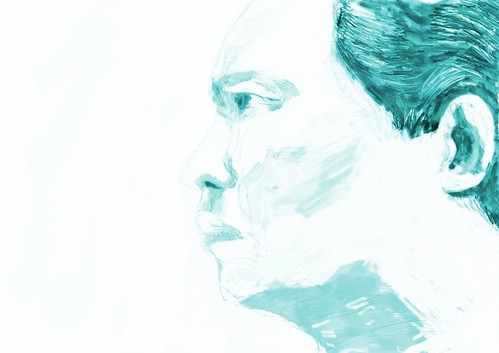

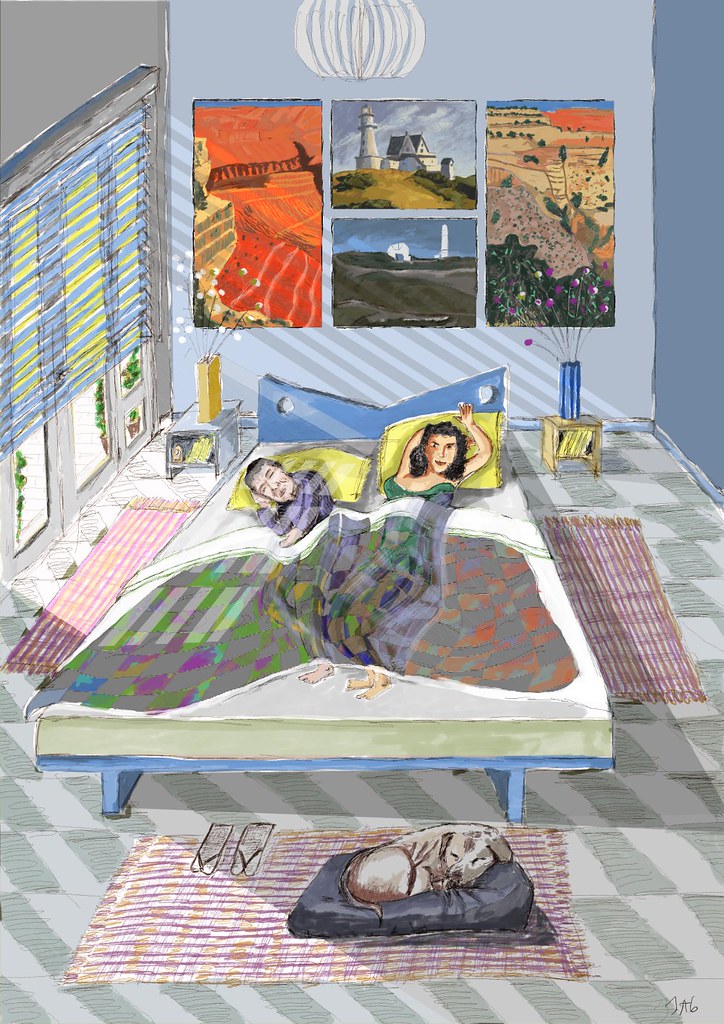



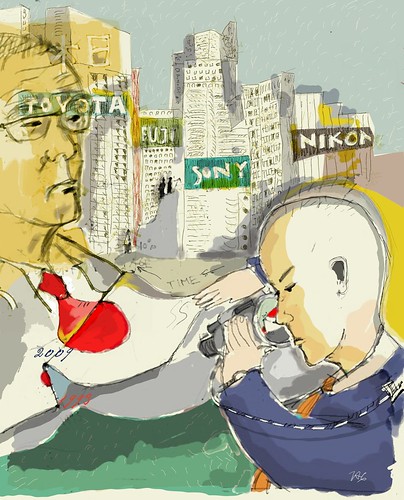 2 - Digital Collage
2 - Digital Collage
the end of 2008, I started some experiments digital collage, my idea is to make less clear and perfect this technique to compute, resulting in cuts similar to those obtained when ripping the paper with your hands. The cutout of a figure, they also poison, leaves more vivid the image, the paper is cut so thin and irregular edge of paper without color. I developed the methodology required to yield this result, but still there are few examples of this technique to computer ... but there are some details of the methodology that I would like to return to simplify the process easier and more intuitive. Examples of a series of collages made in 1997.

Examples of digital collage

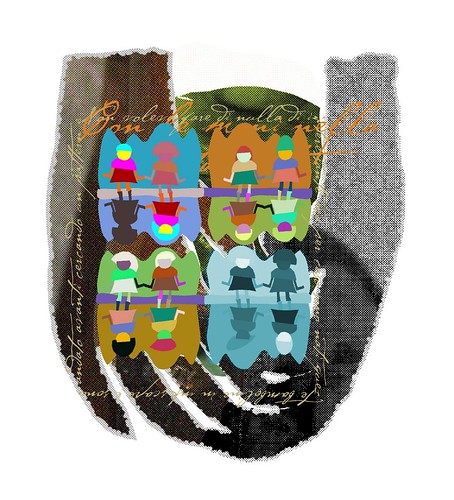 3 - Digital Woodcut
3 - Digital Woodcut
this research I began in March 2008 and wanted to propose the technique to the computer. I created some digital chisels that mimic the effect and uncertainty Cut on the matrix. The research also revived for the digital matrix, where I studied a method to create the textures of different types of wood. The images that I managed to make me look totally convincing without falling into clichés drawing on the computer, to rely on plug-ins or special filters. What I find particularly interesting combination of digital techniques and traditional techniques of etching, dry point as the ... for now we are only all'abbozzo of this methodology. It would be interesting the contrast between the techniques of monotype and intaglio printing such as digital ... where we have single copy versus series. Examples of some works for this Technical
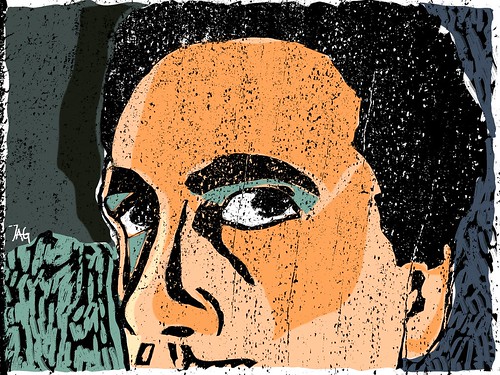
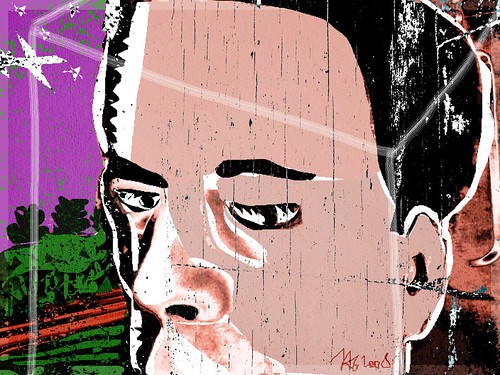

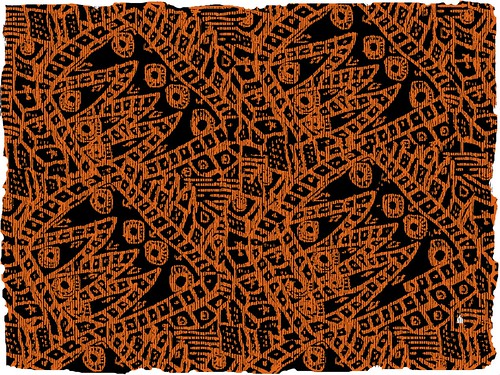 4 - Study on patterns (textures)
4 - Study on patterns (textures)
Since 2009, at times, come on I'm interested in pattern (textures). The textures are present everywhere and in all cultures. With the Internet you can find an extensive bibliography of books on the topic. Recently I am an artist and Slovenian Maja B. Jancic, we've created a Facebook group devoted to this subject, I have included a bibliography of books references on patterns (William Morris, Lewis F. Day, and many others). Very interesting is the mathematical aspect of the thing in which I am particularly interested in examining. For the moment I do not have a precise idea on the outlets of this type of research will certainly be part of a series of works, to say real, I'll just pretend to make my studio ready.
Studies and patterns made on the basis of this research
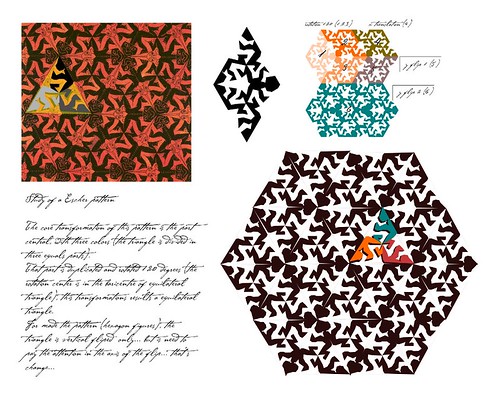

 5 - Birds and Printing
5 - Birds and Printing
In 2008 I began to research whether a Birds combined with typography, I wrote a few things about it and you can find in these links: 1. Project birds - the basics 2. Methodology and applications
The idea is to create a typeface (font) that can be used as a pattern or texture fill geometric shapes ... in my case are figures that can represent the birds. My research work has been largely inspired by the work of the great American artist Charley Harper. The different stages of this research will be exposed as a process, starting from a classical representation and gradually produce the deconstruction of the subject and produce a sui generis using the font created for this purpose.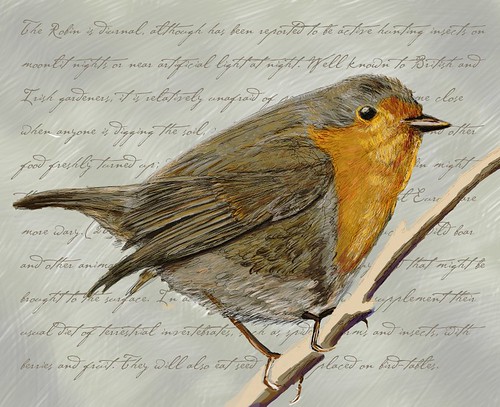
6 - Self-Portraits Flickr Group
In 2009 I started to join the group dedicated to the self-portrait and founded by Brazilian artist, René Tomczak. Now I am the administrator of the group through the group and I met several artists, art teachers and lovers of painting. Recently, one of the artists, Julia Kay, he founded a group where group members are free of portraits of their members ... really a very interesting job. The group currently has about 80 participants and works with 380 ... in the future I would like to present the work of artists in a book published by the group.
http://www.flickr.com/groups/auto-retratos/
References
the extent of my ability to search for every time I would put its references.
Many years ago, when I went again the Academy of Fine Arts in Bologna, ran the year 1986, I had been thinking how it would be the artist of the future. I remember a discussion in the corridors of the Academy with Yuji and I imagine painting with light tools, computers and things like ... certainly the computer and software have made great strides and now you can draw and paint to your computer. Probably the tools and interfaces will improve and get closer to the process of creation. But this process should be as close to the art world, without too much jargon and more practical sense. Today's graphics tablets have become a true display of light where we can draw and paint directly onto the canvas. But unfortunately the software is too complex to master, in my opinion because they use a metaphor of the beginnings of man-machine ... we would see the future.
This image was created with Mypaint a free software program that runs on Linux, MacOS X and Windows. The texture of the paper was created from a sample of watercolor paper Shoeller.

Mypaint and Gimp
are a number of years that this computer work and research on digital painting began in 1990 when I acquired my first computer. I have used many operating systems from DOS, through Windows and Apple environments (MacOS and MacOS X). Since 2003, I mostly use free operating systems, Linux, mainly the distribution called Ubuntu (I find it a very friendly and suitable for my creative work). on Linux (and now also on others such as Windows and MacOS X), there are two applications for scenic painting and 'digital processing, and Mypaint Gimp. Mypaint
is a great application for digital painting, has an essential and innovative methods to create and manage brush.
Gimp is a program created as a package for photo editing but lately is being used by many artists in the digital painting (digital painting). Gimp has a nice form for the creation of brushes and pencils. To do this it has two methods, one based on the physical description of the brush (statically) and placed on another image rasters, called dynamic. In both cases the brushes buy a lot of dynamic effects in the form rendered by the 'brush dynamics' (pressure, velocity and random).
1 - digital brushes (gimp and mypaint)
research based on digital brushes Gimp is started up in 2008 (but with some interruptions and changes of mind). Initially I looked closely at how the dynamic array of brushes in gimp. Brushes can be very complex in terms of construction and, in fact I have created several types, watercolors, acrylics and oil and to some designed to woodcut. Recently I started to remove the meat and to simplify many concepts, trying to figure out how to get the desired effect with minimum effort and maximum economy in the construction of brushes. I produced a series devoted to this exercise with pencils and I managed to get an excellent match with real pencils, high-performance relation to the preparation traits as a draw to your computer. Keep in mind that if the brush is complex, it takes a long processing time to the computer, and this produces a kind of waiting while a draw. With the application Mypaint brushes are all a beautiful and dynamic use of the processing algorithm based on a simple circle, on which we can give reps, speed, randomness, etc.., Added to these basic calculations are a kind of dynamic filters which are static and can be used to create an extensive range of brushes and effects that emulate many painting techniques. Mypaint you can work with virtually infinite on a frame, which is very pleasing to me, useful when being made of quick sketches or ideas while you search for the doodles. lot of work done to your computer with these brushes were commissioned illustrations from magazines or publishers. It is my intention to create a series of works and pictorial compositions, a kind of reinterpretation of the American artist Mark Rothko, using the last set of pencils and crayons to create gimp.

Examples of strokes of the brush dedicated to pencils and crayons


Examples of work done with these digital brushes







 2 - Digital Collage
2 - Digital Collage the end of 2008, I started some experiments digital collage, my idea is to make less clear and perfect this technique to compute, resulting in cuts similar to those obtained when ripping the paper with your hands. The cutout of a figure, they also poison, leaves more vivid the image, the paper is cut so thin and irregular edge of paper without color. I developed the methodology required to yield this result, but still there are few examples of this technique to computer ... but there are some details of the methodology that I would like to return to simplify the process easier and more intuitive. Examples of a series of collages made in 1997.

Examples of digital collage


 3 - Digital Woodcut
3 - Digital Woodcut this research I began in March 2008 and wanted to propose the technique to the computer. I created some digital chisels that mimic the effect and uncertainty Cut on the matrix. The research also revived for the digital matrix, where I studied a method to create the textures of different types of wood. The images that I managed to make me look totally convincing without falling into clichés drawing on the computer, to rely on plug-ins or special filters. What I find particularly interesting combination of digital techniques and traditional techniques of etching, dry point as the ... for now we are only all'abbozzo of this methodology. It would be interesting the contrast between the techniques of monotype and intaglio printing such as digital ... where we have single copy versus series. Examples of some works for this Technical



 4 - Study on patterns (textures)
4 - Study on patterns (textures) Since 2009, at times, come on I'm interested in pattern (textures). The textures are present everywhere and in all cultures. With the Internet you can find an extensive bibliography of books on the topic. Recently I am an artist and Slovenian Maja B. Jancic, we've created a Facebook group devoted to this subject, I have included a bibliography of books references on patterns (William Morris, Lewis F. Day, and many others). Very interesting is the mathematical aspect of the thing in which I am particularly interested in examining. For the moment I do not have a precise idea on the outlets of this type of research will certainly be part of a series of works, to say real, I'll just pretend to make my studio ready.
Studies and patterns made on the basis of this research


 5 - Birds and Printing
5 - Birds and Printing In 2008 I began to research whether a Birds combined with typography, I wrote a few things about it and you can find in these links: 1. Project birds - the basics 2. Methodology and applications
The idea is to create a typeface (font) that can be used as a pattern or texture fill geometric shapes ... in my case are figures that can represent the birds. My research work has been largely inspired by the work of the great American artist Charley Harper. The different stages of this research will be exposed as a process, starting from a classical representation and gradually produce the deconstruction of the subject and produce a sui generis using the font created for this purpose.

6 - Self-Portraits Flickr Group
In 2009 I started to join the group dedicated to the self-portrait and founded by Brazilian artist, René Tomczak. Now I am the administrator of the group through the group and I met several artists, art teachers and lovers of painting. Recently, one of the artists, Julia Kay, he founded a group where group members are free of portraits of their members ... really a very interesting job. The group currently has about 80 participants and works with 380 ... in the future I would like to present the work of artists in a book published by the group.
http://www.flickr.com/groups/auto-retratos/

References
the extent of my ability to search for every time I would put its references.
Subscribe to:
Post Comments (Atom)
0 comments:
Post a Comment